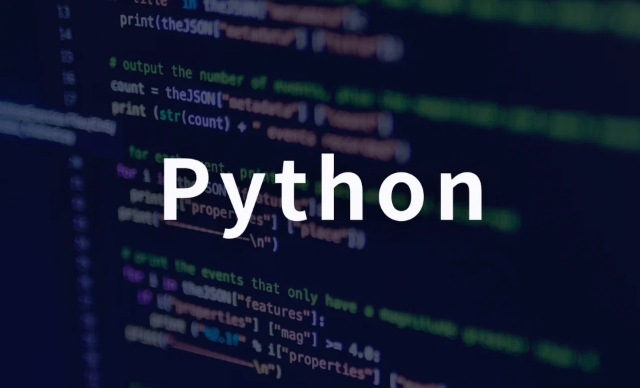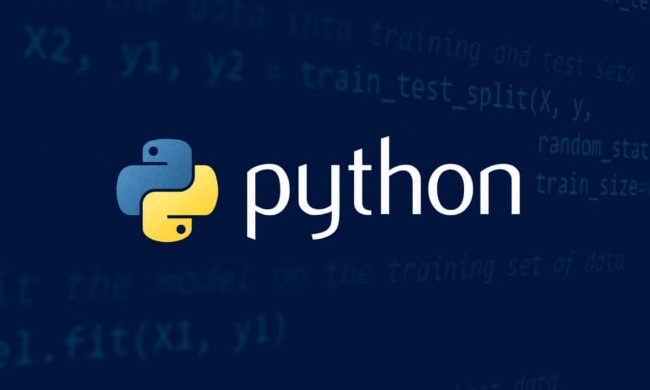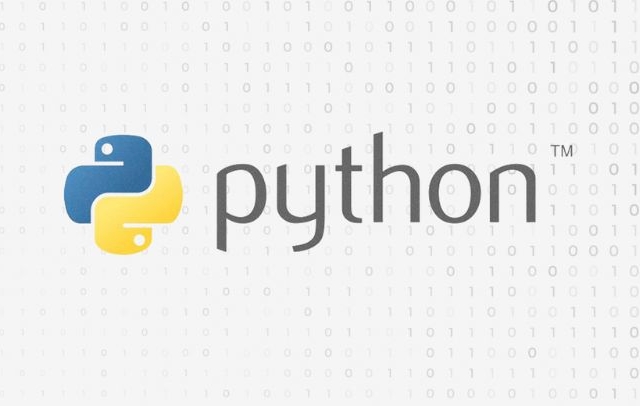 Backend Development
Backend Development
 Python Tutorial
Python Tutorial
 What is the difference between a module and a package in Python?
What is the difference between a module and a package in Python?
What is the difference between a module and a package in Python?
Jul 12, 2025 am 01:58 AMIn Python, the difference between modules and packages is structure and organization. A module is a single file (such as .py) containing Python code that can be used to import functions, classes, or variables; while a package is a directory containing multiple modules and usually contains a __init__.py file to indicate that it is a package. 1. Modules are used for small, independent functions such as date formatting or simple calculations. 2. When the package is used to expand the project scale, the relevant modules are logically grouped to facilitate management of complexity. 3. Packages can be nested subpackages, suitable for large applications or code distribution. 4. Common errors include forgetting __init__.py, naming conflicts, relative import problems, and inappropriate path settings. Therefore, when the modules available in the early stage of development, when the files increase, they should turn to using packages to improve organizationality and maintainability.

In Python, the difference between a module and a package comes down to structure and organization. A module is a single file (typically .py ) that contains Python code—like functions, classes, or variables—that you can import and use elsewhere. A package , on the other hand, is basically a folder containing multiple modules, along with an optional __init__.py file to indicate that it's meant to be treated as a package.

What Exactly Is a Module?
A module is the simplest form of reusable code in Python. When you write a .py file—say, math_utils.py with some math-related functions—you've created a module. You can then import this file into another script or module like this:
import math_utils result = math_utils.add(5, 3)
- Modules help avoid code duplication.
- They make your programs more organized and easier to maintain.
- Any Python file can be a module, as long as it's important.
You might already be using built-in modules like os , sys , or datetime without realizing they're just regular files behind the scenes.

How Do Packages Work?
Packages are how Python organizations related modules into directories. For example, if you're building a larger app, you might have a structure like this:
my_project/
│
├── __init__.py
├── main.py
└── utils/
├── __init__.py
├── math_utils.py
└── string_utils.py Here, utils is a package because it's a directory with modules inside and an __init__.py file (which can be empty or contain setup code). You can import modules from it like:

from utils import math_utils
- Packages can contain sub-packages, allowing for deep nesting when needed.
- The
__init__.pyused to be required to make Python treat a directory as a package (in Python 3.3 , it's optional due to implicit namespace packages). - This structure helps manage complexity in large projects.
Practical Use Cases and When to Use Which
Use a module when your functionality is small and self-contained. For example, a script that handles date formatting or simple calculations.
-
Use a package when:
- Your project grows beyond a few files.
- You want to logically group related modules.
- You're planning to distribute your code (eg, via PyPI).
Some real-world examples:
- The standard library uses both:
osis a module, whileemailis a package with many submodules. - Web frameworks like Django and Flask use packages heavily to organize views, models, and templates.
Common Mistakes and Gotchas
When working with modules and packages, a few issues come up often:
- ? Forgetting to include
__init__.pyin older Python versions (pre-3.3), which leads toModuleNotFoundError. - ? Having naming conflicts with standard library modules (like calling your file
random.py). - ? Messing up relative imports inside packages (
from . import somethingonly works inside packages). - ? Not setting up the Python path correctly when importing from non-standard locations.
If you're starting a new project, begin with modules, and once things get a bit messy, start grouping them into packages.
So, the distinction boils down to scale and structure—modules are individual pieces, and packages are collections of those pieces. Once your codebase grows past a handful of files, packaging becomes not just helpful but necessary.
The above is the detailed content of What is the difference between a module and a package in Python?. For more information, please follow other related articles on the PHP Chinese website!

Hot AI Tools

Undress AI Tool
Undress images for free

Undresser.AI Undress
AI-powered app for creating realistic nude photos

AI Clothes Remover
Online AI tool for removing clothes from photos.

Clothoff.io
AI clothes remover

Video Face Swap
Swap faces in any video effortlessly with our completely free AI face swap tool!

Hot Article

Hot Tools

Notepad++7.3.1
Easy-to-use and free code editor

SublimeText3 Chinese version
Chinese version, very easy to use

Zend Studio 13.0.1
Powerful PHP integrated development environment

Dreamweaver CS6
Visual web development tools

SublimeText3 Mac version
God-level code editing software (SublimeText3)

Hot Topics
 How does Python's unittest or pytest framework facilitate automated testing?
Jun 19, 2025 am 01:10 AM
How does Python's unittest or pytest framework facilitate automated testing?
Jun 19, 2025 am 01:10 AM
Python's unittest and pytest are two widely used testing frameworks that simplify the writing, organizing and running of automated tests. 1. Both support automatic discovery of test cases and provide a clear test structure: unittest defines tests by inheriting the TestCase class and starting with test\_; pytest is more concise, just need a function starting with test\_. 2. They all have built-in assertion support: unittest provides assertEqual, assertTrue and other methods, while pytest uses an enhanced assert statement to automatically display the failure details. 3. All have mechanisms for handling test preparation and cleaning: un
 How can Python be used for data analysis and manipulation with libraries like NumPy and Pandas?
Jun 19, 2025 am 01:04 AM
How can Python be used for data analysis and manipulation with libraries like NumPy and Pandas?
Jun 19, 2025 am 01:04 AM
PythonisidealfordataanalysisduetoNumPyandPandas.1)NumPyexcelsatnumericalcomputationswithfast,multi-dimensionalarraysandvectorizedoperationslikenp.sqrt().2)PandashandlesstructureddatawithSeriesandDataFrames,supportingtaskslikeloading,cleaning,filterin
 What are dynamic programming techniques, and how do I use them in Python?
Jun 20, 2025 am 12:57 AM
What are dynamic programming techniques, and how do I use them in Python?
Jun 20, 2025 am 12:57 AM
Dynamic programming (DP) optimizes the solution process by breaking down complex problems into simpler subproblems and storing their results to avoid repeated calculations. There are two main methods: 1. Top-down (memorization): recursively decompose the problem and use cache to store intermediate results; 2. Bottom-up (table): Iteratively build solutions from the basic situation. Suitable for scenarios where maximum/minimum values, optimal solutions or overlapping subproblems are required, such as Fibonacci sequences, backpacking problems, etc. In Python, it can be implemented through decorators or arrays, and attention should be paid to identifying recursive relationships, defining the benchmark situation, and optimizing the complexity of space.
 How can you implement custom iterators in Python using __iter__ and __next__?
Jun 19, 2025 am 01:12 AM
How can you implement custom iterators in Python using __iter__ and __next__?
Jun 19, 2025 am 01:12 AM
To implement a custom iterator, you need to define the __iter__ and __next__ methods in the class. ① The __iter__ method returns the iterator object itself, usually self, to be compatible with iterative environments such as for loops; ② The __next__ method controls the value of each iteration, returns the next element in the sequence, and when there are no more items, StopIteration exception should be thrown; ③ The status must be tracked correctly and the termination conditions must be set to avoid infinite loops; ④ Complex logic such as file line filtering, and pay attention to resource cleaning and memory management; ⑤ For simple logic, you can consider using the generator function yield instead, but you need to choose a suitable method based on the specific scenario.
 What are the emerging trends or future directions in the Python programming language and its ecosystem?
Jun 19, 2025 am 01:09 AM
What are the emerging trends or future directions in the Python programming language and its ecosystem?
Jun 19, 2025 am 01:09 AM
Future trends in Python include performance optimization, stronger type prompts, the rise of alternative runtimes, and the continued growth of the AI/ML field. First, CPython continues to optimize, improving performance through faster startup time, function call optimization and proposed integer operations; second, type prompts are deeply integrated into languages ??and toolchains to enhance code security and development experience; third, alternative runtimes such as PyScript and Nuitka provide new functions and performance advantages; finally, the fields of AI and data science continue to expand, and emerging libraries promote more efficient development and integration. These trends indicate that Python is constantly adapting to technological changes and maintaining its leading position.
 How do I perform network programming in Python using sockets?
Jun 20, 2025 am 12:56 AM
How do I perform network programming in Python using sockets?
Jun 20, 2025 am 12:56 AM
Python's socket module is the basis of network programming, providing low-level network communication functions, suitable for building client and server applications. To set up a basic TCP server, you need to use socket.socket() to create objects, bind addresses and ports, call .listen() to listen for connections, and accept client connections through .accept(). To build a TCP client, you need to create a socket object and call .connect() to connect to the server, then use .sendall() to send data and .recv() to receive responses. To handle multiple clients, you can use 1. Threads: start a new thread every time you connect; 2. Asynchronous I/O: For example, the asyncio library can achieve non-blocking communication. Things to note
 How do I slice a list in Python?
Jun 20, 2025 am 12:51 AM
How do I slice a list in Python?
Jun 20, 2025 am 12:51 AM
The core answer to Python list slicing is to master the [start:end:step] syntax and understand its behavior. 1. The basic format of list slicing is list[start:end:step], where start is the starting index (included), end is the end index (not included), and step is the step size; 2. Omit start by default start from 0, omit end by default to the end, omit step by default to 1; 3. Use my_list[:n] to get the first n items, and use my_list[-n:] to get the last n items; 4. Use step to skip elements, such as my_list[::2] to get even digits, and negative step values ??can invert the list; 5. Common misunderstandings include the end index not
 Polymorphism in python classes
Jul 05, 2025 am 02:58 AM
Polymorphism in python classes
Jul 05, 2025 am 02:58 AM
Polymorphism is a core concept in Python object-oriented programming, referring to "one interface, multiple implementations", allowing for unified processing of different types of objects. 1. Polymorphism is implemented through method rewriting. Subclasses can redefine parent class methods. For example, the spoke() method of Animal class has different implementations in Dog and Cat subclasses. 2. The practical uses of polymorphism include simplifying the code structure and enhancing scalability, such as calling the draw() method uniformly in the graphical drawing program, or handling the common behavior of different characters in game development. 3. Python implementation polymorphism needs to satisfy: the parent class defines a method, and the child class overrides the method, but does not require inheritance of the same parent class. As long as the object implements the same method, this is called the "duck type". 4. Things to note include the maintenance





